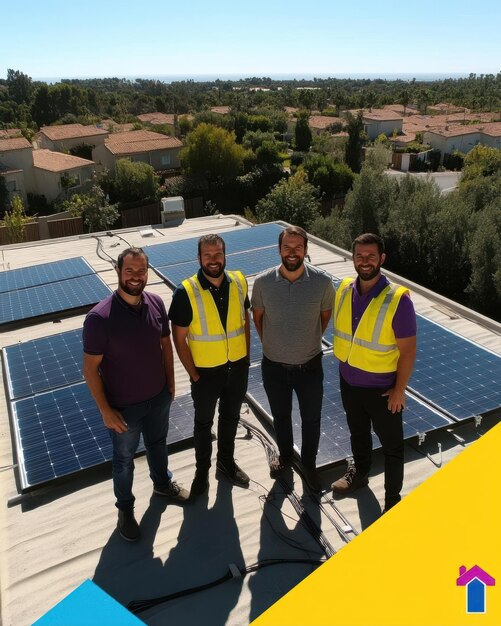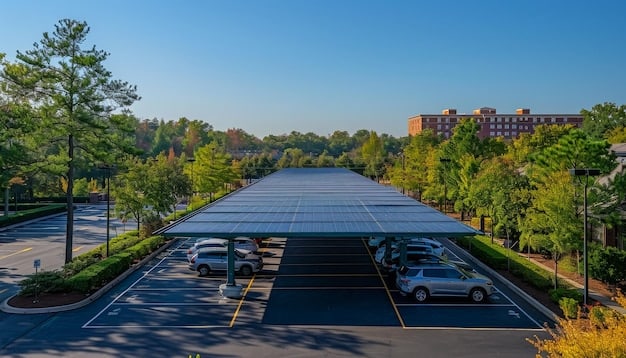What are the Implications of the US Rejoining the Paris Agreement?

The implications of the US rejoining the Paris Agreement are far-reaching, encompassing significant positive impacts on global climate efforts, domestic economic shifts towards green technologies, and the restoration of US credibility in international environmental policy.
The United States’ decision to rejoin the Paris Agreement marks a pivotal moment in the global fight against climate change. This move, reversing the previous administration’s withdrawal, signals a renewed commitment to international cooperation and environmental stewardship. Understanding What are the Implications of the US Rejoining the Paris Agreement? is crucial for grasping the future of climate action.
The US Return: A Global Climate Game Changer
The re-entry of the US into the Paris Agreement carries substantial weight on the global stage. It not only reinforces the agreement’s legitimacy but also injects renewed momentum into international climate negotiations and collaborative efforts.
With the US back on board, the agreement’s goals become more attainable, and the collective commitment to reducing greenhouse gas emissions is amplified. This renewed alliance strengthens the resolve of other nations, encouraging greater action and more ambitious targets.
Restoring International Credibility
The US’s initial departure from the Paris Agreement under the previous administration had eroded trust in its commitment to global environmental issues. Rejoining is a crucial step toward rebuilding that trust.
By aligning with international climate goals, the US demonstrates its willingness to cooperate and lead in addressing climate change, which is essential for fostering meaningful global partnerships. This restoration of credibility encourages other nations to view the US as a reliable partner in future climate endeavors.
Accelerating Global Climate Action
US participation accelerates the pace of global climate action through increased funding, technological innovation, and policy alignment. The agreement benefits from the US’s contributions in these areas.
- Investment in Green Technologies: The US can stimulate the development and deployment of innovative technologies, making them more accessible and affordable for other nations.
- Enhanced Policy Frameworks: The US can share its expertise in developing effective climate policies, promoting best practices globally.
- Strengthened International Cooperation: The US rejoining provides a platform for enhanced dialogue and collaboration on climate-related issues.
In summary, the US’s return to the Paris Agreement acts as a catalyst for intensified global environmental efforts, revitalizing international cooperation and pushing the world closer to achieving its climate goals.
Economic Impacts: Green Investments and Job Creation
The economic implications of the US rejoining the Paris Agreement are substantial, potentially leading to significant green investments and new job opportunities. Transitioning to a low-carbon economy requires and fosters innovation and economic growth.
These changes present opportunities for businesses and workers alike, driving the development of sustainable industries and creating jobs in renewable energy, clean technology, and energy efficiency sectors.

Stimulating Green Industries
Rejoining the Paris Agreement sends a strong signal to investors, encouraging them to allocate capital towards green industries. This infusion of capital can drive innovation, reduce costs, and scale up renewable energy projects.
Furthermore, it aligns business strategies with sustainability goals, fostering a market environment where environmentally friendly practices are economically rewarding. Government incentives, research grants, and public-private partnerships can also support the growth of green businesses.
Job Creation in Renewable Energy
The transition to a green economy is expected to generate millions of jobs in sectors such as solar, wind, and electric vehicle manufacturing. These jobs offer opportunities for both skilled and unskilled workers, revitalizing local economies and reducing unemployment.
- Skilled Labor: Engineers, technicians, project managers are needed to develop, install, and maintain renewable energy systems.
- Manufacturing: Factories producing wind turbines, solar panels, and batteries will require a large workforce.
- Construction: Workers are needed to build renewable energy infrastructure and upgrade existing buildings.
Overall, rejoining the Paris Agreement can trigger an economic transformation, leading to substantial investments in green industries and creating numerous job opportunities in the renewable energy sector. These developments not only enhance economic prosperity but also contribute to a more sustainable future.
Policy Alignment and Domestic Initiatives
To fully realize the benefits of rejoining the Paris Agreement, the US must align its domestic policies with the agreement’s goals. This alignment involves implementing regulations, incentives, and investments that promote emissions reductions and sustainable practices.
Establishing ambitious targets and policies is vital for achieving the goals set by the Paris Agreement and bolstering its credibility on the international stage. It will lead to long-term benefits, including a cleaner environment and economic opportunities.
Setting Ambitious Emissions Targets
The US commitment to reducing emissions should be ambitious, aligned with the goal of limiting global warming to 1.5 degrees Celsius. These targets should be science-based and achievable through a combination of policy measures and technological innovations.
Regular reviews and updates of these targets are essential to ensure the US remains on track with its climate commitments.
Implementing Federal Regulations and Incentives
Federal regulations can play a crucial role in driving emissions reductions across various sectors. Carbon pricing mechanisms, emission standards for vehicles and power plants, and energy efficiency mandates for buildings can incentivize companies and individuals to adopt cleaner technologies and practices.
- Carbon Pricing: Taxing carbon emissions encourages businesses to reduce their environmental footprint.
- Emission Standards: Regulations on vehicle and power plant emissions drive technological innovation.
- Energy Efficiency: Mandates for buildings reduce energy consumption and lower emissions.
To effectively align domestic initiatives with the Paris Agreement, the US government should implement robust regulations, offer targeted incentives, and invest in sustainable infrastructure. This comprehensive approach will ensure that the US not only meets its climate commitments but also reaps the economic and social benefits of a green transition.

Technological Innovation and Research
Technological innovation is at the heart of achieving the deep emissions cuts required by the Paris Agreement. The US rejoining the agreement can spur greater investment in research and development, leading to breakthroughs in renewable energy, carbon capture, and other climate-friendly technologies.
Supporting innovation accelerates the transition to a low-carbon economy by reducing costs, improving efficiency, and enabling new solutions to climate challenges. It can also enhance the competitiveness of US industries in the global green market.
Investing in Renewable Energy Technologies
Increased investment in renewable energy technologies is essential for reducing the cost and increasing the efficiency of solar, wind, hydro, and geothermal power. Funding for research can lead to breakthroughs in energy storage, grid modernization, and distributed generation.
Government support, private sector investment, and academic research can work together to create a robust ecosystem for renewable energy innovation.
Advancing Carbon Capture and Storage
Carbon capture and storage (CCS) technologies can play a crucial role in reducing emissions from industrial processes and power plants. Further research is needed to improve the efficiency and affordability of CCS, as well as to ensure its safe and effective deployment.
- Pilot Projects: Funding pilot projects to test CCS technologies on a commercial scale.
- Infrastructure Development: Investing in infrastructure for transporting and storing captured carbon dioxide.
- Policy Support: Creating policy frameworks that incentivize CCS adoption.
In short, technological innovation and research are critical for addressing climate change and fulfilling the goals of the Paris Agreement. By investing in renewable energy technologies, advancing carbon capture and storage, and fostering public-private partnerships, the US can accelerate the development and deployment of climate-friendly solutions.
Environmental Justice and Equity
The implications of the US rejoining the Paris Agreement extend beyond emissions reductions and economic opportunities. It also presents an opportunity to address environmental justice and equity issues that disproportionately affect vulnerable communities.
Addressing these issues can lead to more inclusive and sustainable climate policies that benefit all members of society. It also builds stronger alliances and support for climate action.
Addressing Disproportionate Impacts
Climate change disproportionately impacts low-income communities and communities of color, who often live in areas more vulnerable to pollution and extreme weather events. Climate policies should prioritize these communities by reducing pollution, improving access to clean energy, and investing in resilience measures.
Ensuring that the benefits of climate action are shared equitably is vital for achieving a just and sustainable transition.
Promoting Community Engagement
Effective climate policies should involve meaningful engagement with local communities, ensuring that their voices are heard and their needs are addressed. Community-based initiatives and participatory decision-making can lead to more effective and equitable outcomes.
- Community Workshops: Hosting workshops to gather input on climate policies.
- Advisory Boards: Creating advisory boards with community representatives.
- Local Projects: Supporting local climate resilience and adaptation projects.
Ultimately, integrating environmental justice and equity considerations into climate policies is essential for creating a fair and sustainable future. By addressing disproportionate impacts, promoting community engagement, and ensuring inclusive decision-making, the US can create climate policies that benefit all members of society and build broader support for climate action.
Challenges and Obstacles Ahead
Despite the potential benefits, the US faces several challenges and obstacles in fully realizing the implications of rejoining the Paris Agreement. Political polarization, economic uncertainties, and technological limitations can hinder progress and undermine climate action.
The US needs to address these challenges head-on through bipartisan collaboration, strategic investments, and innovative solutions to ensure its climate commitments are met effectively and sustainably.
Navigating Political Polarization
Climate change has become a deeply polarized issue in the US, with significant disagreements between Democrats and Republicans on the urgency of the problem and the appropriate policy responses. Bipartisan support is essential for implementing sustainable climate policies that can withstand political shifts.
Building consensus on climate action requires engaging with diverse stakeholders, addressing concerns about economic impacts, and emphasizing the potential benefits of a green transition. Finding common ground on issues such as renewable energy, energy efficiency, and infrastructure investments can foster broader political support.
Overcoming Economic Uncertainties
The transition to a low-carbon economy can create economic uncertainties, particularly for industries that rely on fossil fuels. Addressing these uncertainties requires strategic investments in workforce development, economic diversification, and support for communities affected by the transition.
- Workforce Development: Training programs to help workers transition to green jobs.
- Economic Diversification: Supporting new industries and businesses in fossil fuel-dependent regions.
- Infrastructure Investments: Upgrading infrastructure to support renewable energy and electric vehicles.
In conclusion, overcoming these challenges requires a proactive and comprehensive approach that addresses political polarization, economic uncertainties, and technological limitations. By building bipartisan consensus, investing in innovation, and prioritizing environmental justice, the US can navigate these obstacles and fully realize the potential of rejoining the Paris Agreement.
| Key Aspect | Brief Description |
|---|---|
| 🤝 Global Cooperation | Strengthens international climate efforts and boosts global targets. |
| 🌱 Economic Growth | Spurs green investments and creates renewable energy jobs. |
| ⚡ Policy Changes | Requires aligning domestic policies with Paris Agreement goals. |
| 🌍 Environmental Justice | Addresses unequal effects of climate change on vulnerable communities. |
Frequently Asked Questions
▼
The Paris Agreement is an international accord aiming to combat climate change. It sets global goals to limit temperature increases and promotes efforts to reduce greenhouse gas emissions.
▼
The US rejoined to show commitment to global climate action, restore international credibility, and drive sustainable economic growth through green technologies.
▼
It stimulates investments in renewable energy and green tech, creating jobs in sustainable sectors while reducing dependence on fossil fuels.
▼
Ambitious emission targets, carbon pricing, renewable energy incentives, and energy efficiency standards are essential policies for alignment.
▼
Navigating political polarization, overcoming economic uncertainties during the transition, and addressing environmental equity are the significant challenges.
Conclusion
In conclusion, the US rejoining the Paris Agreement carries profound implications for global climate efforts, domestic economic growth, and international relationships. While challenges remain, the renewed commitment signals a significant step towards a sustainable future.





